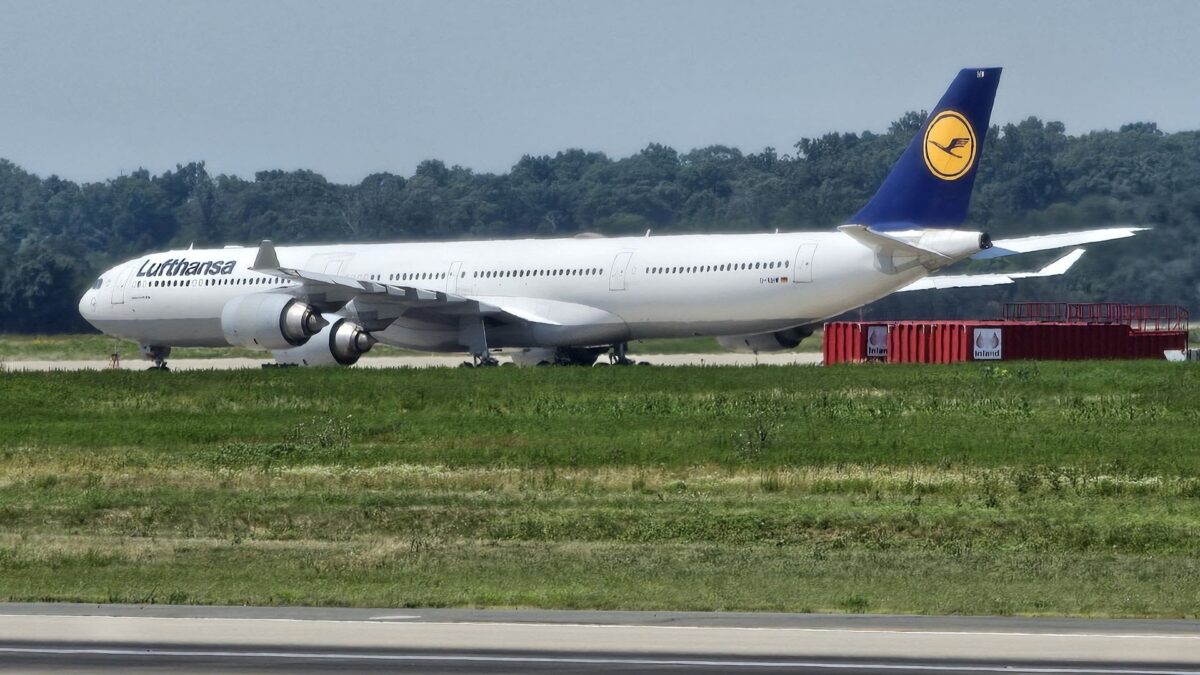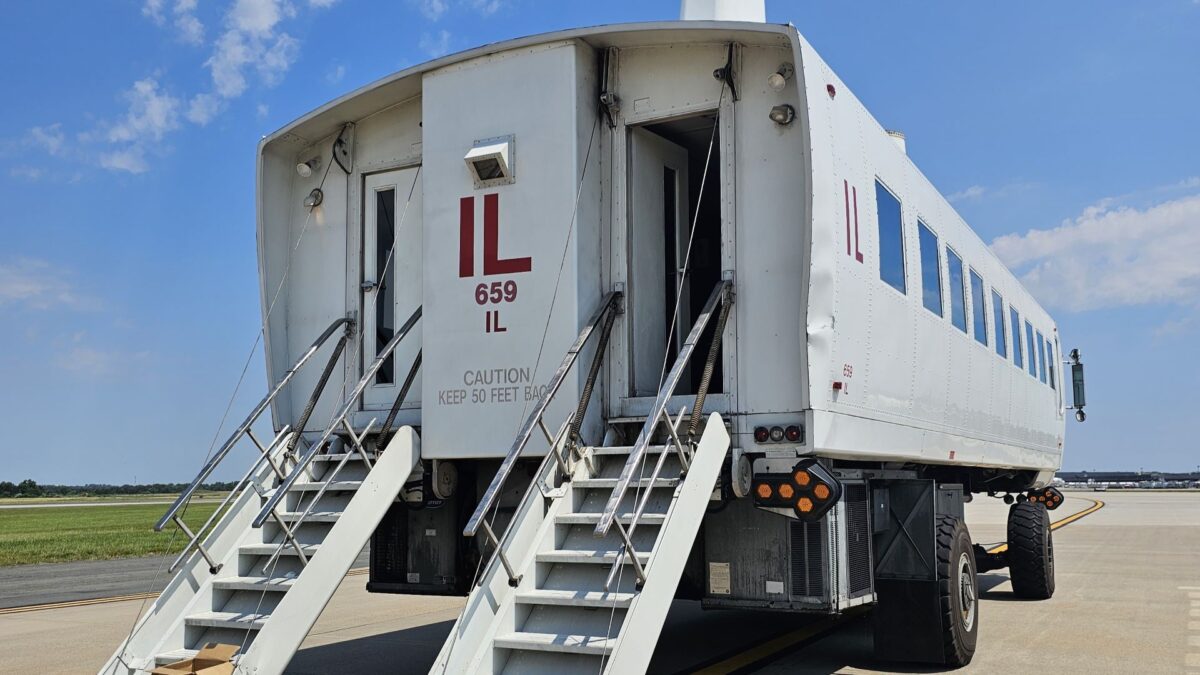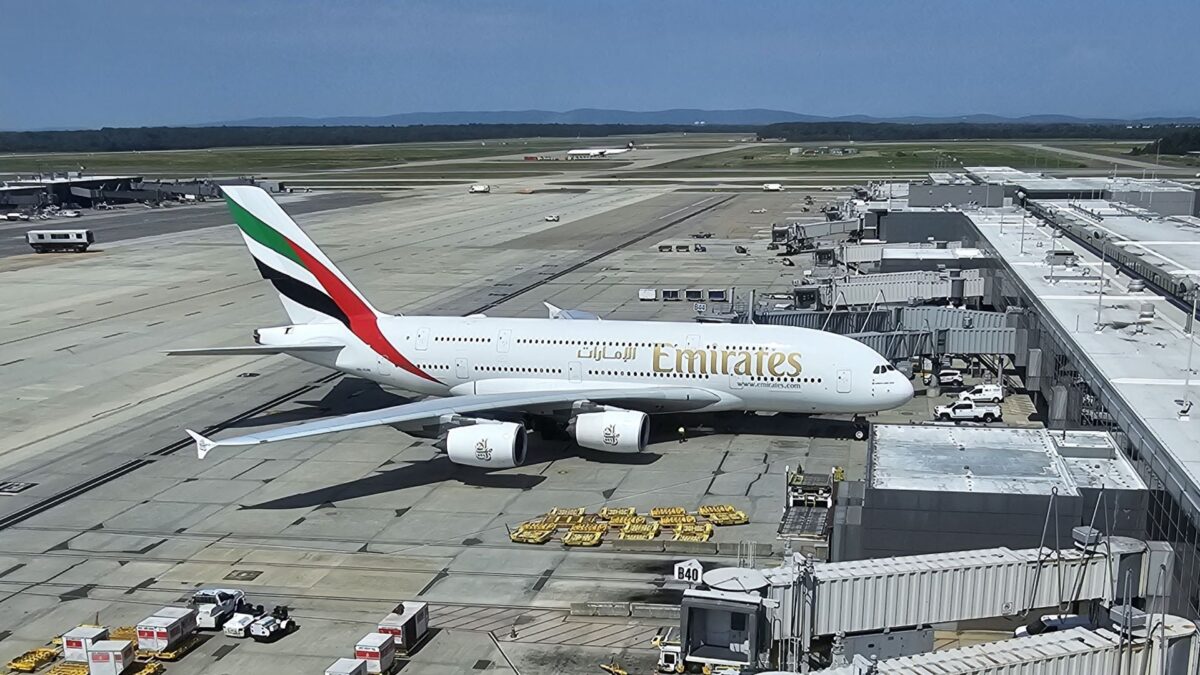DULLES, Va. — A reporter picks up interesting anecdotes that often don’t make it into regular articles. Here are some tidbits and observations from a behind-the-scenes press tour at Dulles International Airport (IAD), outside Washington last Monday. Dulles set a record with 25 million passengers last year. The airport authority is also moving ahead with $7 billion of expansion work over the next 15 years, with construction already underway on a 14-gate concourse scheduled to open in 2026 and plans for a fifth runway. Airport officials hosted the tour to highlight how the airport is building the foundation to handle 55 million passengers and more cargo, as well as improve the travel experience.
On the ground with United Cargo
United Airlines has the largest operation at Dulles International Airport, accounting for 60% of all flights, and plans to expand its schedule further at one of its top five hubs. The increased capacity will also present more opportunities for shippers in the mid-Atlantic region.
A week ago, FreightWaves had the opportunity to go on the ramp where United Cargo crews were loading a Boeing 777-200 bound for Tokyo with eight large pallets of cargo.
United moves about 500,000 pounds of cargo each day at Dulles airport, and about 57% of it is transfer freight that originates at another airport and gets relayed on a different flight to the end destination in the airline’s network, said Chris Busch, vice president of cargo.
United Cargo’s Dulles station handles typical airfreight commodities such as pharmaceuticals, perishable goods and e-commerce. Flights to Tokyo tend to have a lot of flowers transshipped from Latin America.
Busch said United, like most airlines, has seen material growth of e-commerce volumes this decade. Those e-commerce shipments, however, are consolidated and booked on United by freight forwarders that have a direct relationship with online retailers.
Media bus breaks down
The airport authority and Virginia Economic Development Partnership wanted to highlight IAD’s ambitious growth plans, including construction of a passenger terminal that will be reached with an airtrain. A limousine bus reserved by the VEDP arrived to take some journalists and staff from a local hotel to the airport, but the driver couldn’t restart the engine when it was time to depart because the battery was dead. Five people had to jump into a staff member’s large Dodge Ram to make it to the initial briefing. It was a little ironic that we were there to see how a massive transportation system seamlessly functioned and yet a small piece of transportation equipment broke down. But it also was a perfect example of how logistics people function: They quickly adapt and use redundant resources to keep the show going when stuff happens, as it always does.
Lufthansa A340 inoperable

We went around Dulles International Airport’s massive airfield in one of the odd-looking mobile lounges that have long ferried passengers between the main terminal and aircraft gates. Parked all alone in the middle of the field was an Airbus A340-600 in Lufthansa colors. The widebody jet had arrived three days earlier and was waiting for a part to be swapped out. It was scheduled to fly out later that Monday. The sighting illustrated to me the importance of on-demand, expedited logistics services that can quickly get parts to airlines, because every hour an aircraft is out of service it is losing money. And that’s where freight forwarders with highly specialized credentials to handle urgent “aircraft on ground” shipments play a key role. The same response is critical when a manufacturing line goes down. These logistics providers can employ a variety of solutions, including next-flight-out options, onboard couriers that will hand carry a critical component, next-day delivery, and full and partial aircraft charters. More sophisticated outfits will have a control tower that tracks the shipment and helps resolve any compliance or other issues along the way.
Unique people movers get new lease on life

Dulles International Airport was built in 1962 with terminals separated in rows in what is best described as a toaster configuration. Boxy mobile lounges called “people movers” were used to transport people between the main check-in/baggage terminal and terminals with aircraft gates. More than 60 years later, 19 of these mobile lounges and 30 “plane mates” — mobile jet bridges — are still operating to the D concourse and remote parking stands that the partial underground train system doesn’t reach.
The manufacturer no longer makes the hulking, 92,000-pound vehicles, so it takes a lot of manpower and ingenuity to keep them operating. Dulles airport maintenance crews have to fabricate parts themselves. The airport recently issued a $160 million contract to fully renovate the mobile lounges, which will probably remain in use for another 20 years until the train system is made into a complete loop, said Airport Manager Richard Golinowski.
Airbus A380 up close

A massive Airbus A380 that belongs to Emirates and can carry 519 people pulled back from the gate just as we completed a visit to the ground control tower. The mobile lounge used for the media tour began following the A380 as it taxied to the runway. Members of the media and other guests got off the people mover in the concrete median between the runway and major taxiways where we were to watch the A380 takeoff up close. The jetliner must have waited 30 minutes before getting the go-ahead from air traffic control because so many passenger aircraft — nearly all of them from United Airlines — were landing one after another. It was an amazing sight to see the huge jet lumber down the runway and lift off right in front of us on its way nonstop to Dubai. It never gets old watching commercial aircraft grace the skies, and it never ceases to amaze how engineers and machinists build flying vehicles that have a maximum takeoff weight of several hundred tons.
Click here for more FreightWaves stories by Eric Kulisch.








Jim Gray
Loved the article. Dulles is my airport for international flights, and I hate it with a passion. Arriving after an 8 hour flight on an A380 (or any other plane) and having to then wait and wait for those blasted people movers to take you to customs hall is the ultimate recipe for boiling over.
Ken
A few years ago, I rode a 380 from Lufthansa from IAD on a flight to somewhere in EU.
What I remember was that it seemed to be going entirely too slowly when it lifted off.
I suppose it was some kind of optical illusion resulting from the size of the plane.